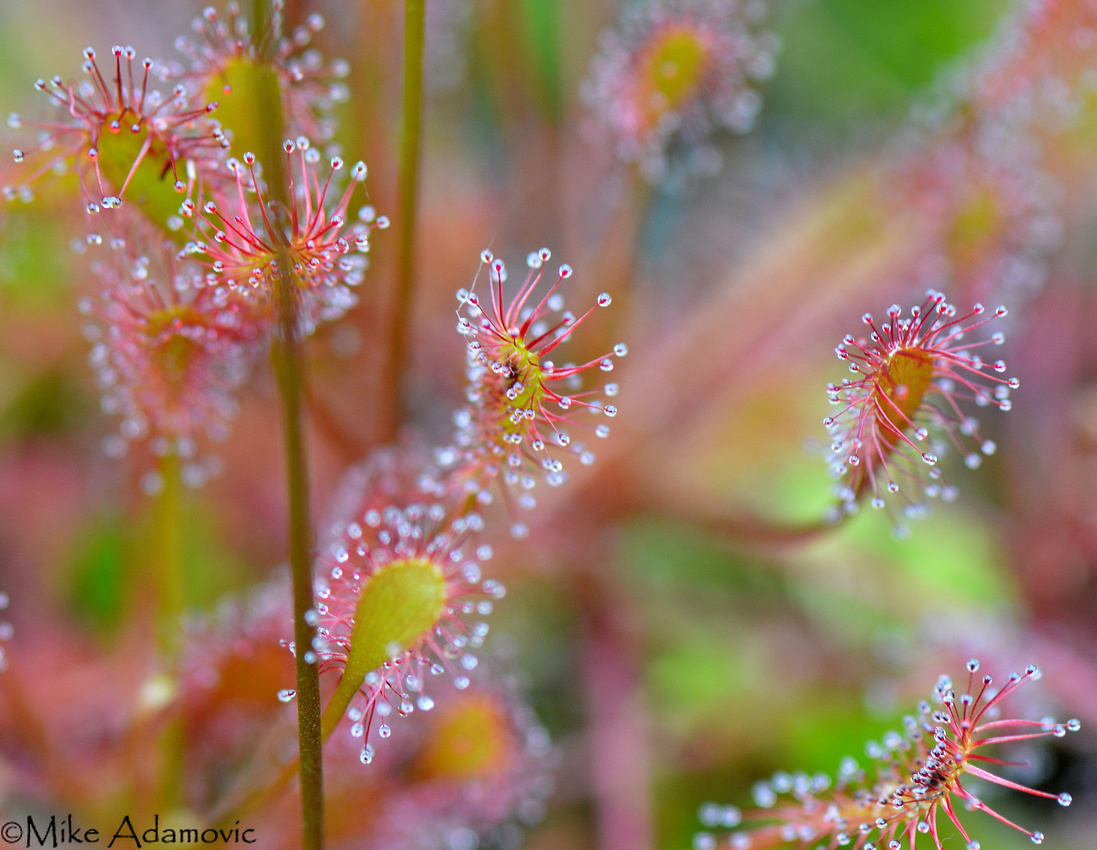Bogs
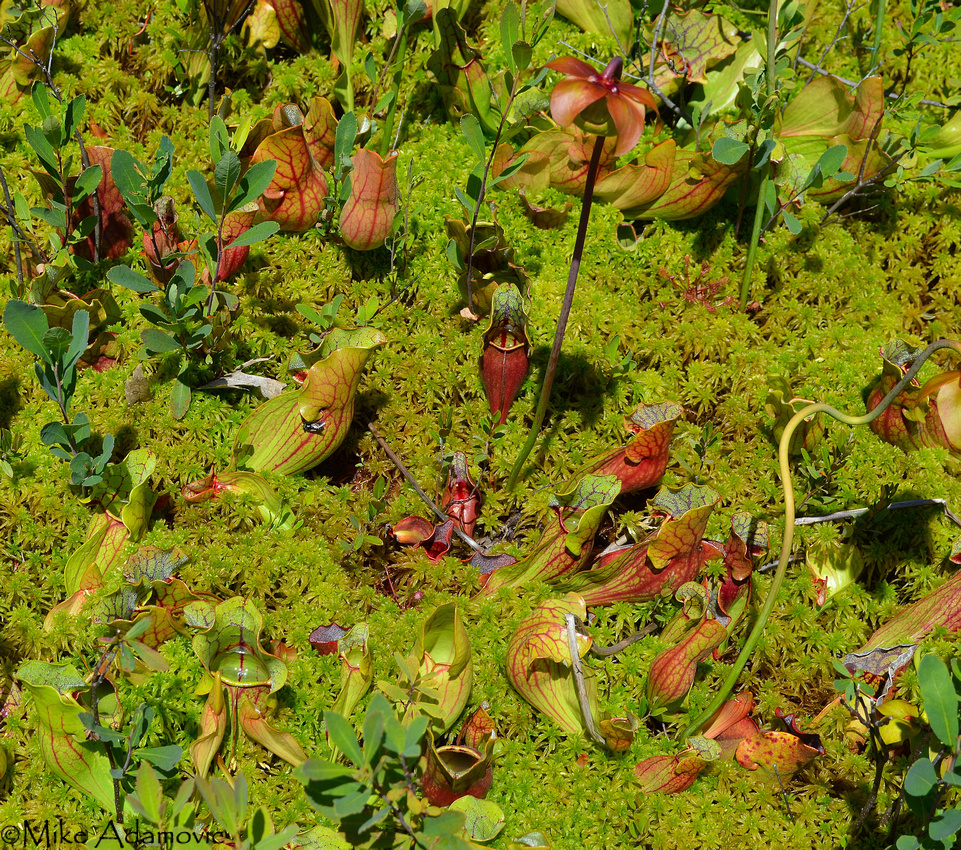

When the average person thinks about a bog—if any thought is put to them at all—images conjured in the mind often descend onto stereotypical pictures of dismal swamps, ripe with swarms of mosquitoes and unholy smells, and of course, the singular home of Hollywood “swamp monsters.” Few would list any positive attributes, mostly, because, so few have actually spent anytime near these places, other than the occasional drive-by. These important wetlands have been much maligned over the years. The fact of the matter is, most who actually take the time to visit a bog, or other similar place will come to appreciate them for their uncanny beauty, and the rich assortment of unusual life they contain. Yes, bogs, like other wetlands, are undoubtedly somewhat smelly and often contain stagnant water that isn’t the most visually appealing, but the same can be said about the various cheeses of the world, some that not only unsightly—and sometimes purposefully contain mold—but also possess a scent that makes us wish we could sandblast our nose from our face, after imbibing a rancid whiff. Despite these unpleasant airs, we still crave and copiously devour them. So, why should we be so quick to dismiss the similarly misunderstood bogs, which make up for their so-called faults in other ways, too?
Bogs, like other wetlands, are absolutely amazing places. Their importance cannot be overstated. These drowned parcels of land contribute greatly to the continued health and well-being of the environment, acting as the lungs and liver of the earth, as it were. Much of the waste that we aloofly flood our planet with, from noxious atmospheric emissions to pesticides and other industrial chemicals, ultimately find their way into these various mucky sponges where they are graciously filtered and broken down or sequestered by complex interactions between microbes and plants. We may much prefer to have a pristine lake on our property that matches the azure tint of the sky and teems with abundant arrays of fish; but dingy, shallow wetlands, are a far more valuable natural resource.
These wetlands fall into four main categories: swamps, marshes, fens, and bogs. Swamps are dominated by trees, while marshes are characterized by non-woody herbaceous vegetation, such as cattails and reeds. Fens and bogs in the Northeast are usually rarer and are exceptionally rich in organic matter, often forming dense layers of peat. They are alkaline and acidic, respectively. Fens receive replenishment mostly from flowing groundwater sources. Their pH reflects that of the surrounding strata, which usually happens to be limestone, a highly alkaline rock. Plants inhabiting fens include mostly grasses, sedges, and reeds. Bogs, on the other hand, receive almost all their water from rainfall. With only minor additions of water—none from free-flowing sources—organic matter within the bog acidifys the surroundings, resulting in an unusually low pH that creates the perfect habitat for strange, alien looking plant species. Bogs contain sphagnum moss, heaths, and certain other shrubs. The elusive cranberries also call these spots home; a walk through them in mid-October reveals a remarkably Christmas-like display of beauty, with plump ruby ornaments attached to stalks whose leaves closely resemble evergreen needles, all tucked among soft, lime-green mats of moss that gently float atop the stagnant water. The display of color and attractive sights are not solely confined to autumn, however. At the peak of summer there are equally attractive sights arising from the blooming of carnivorous plants.
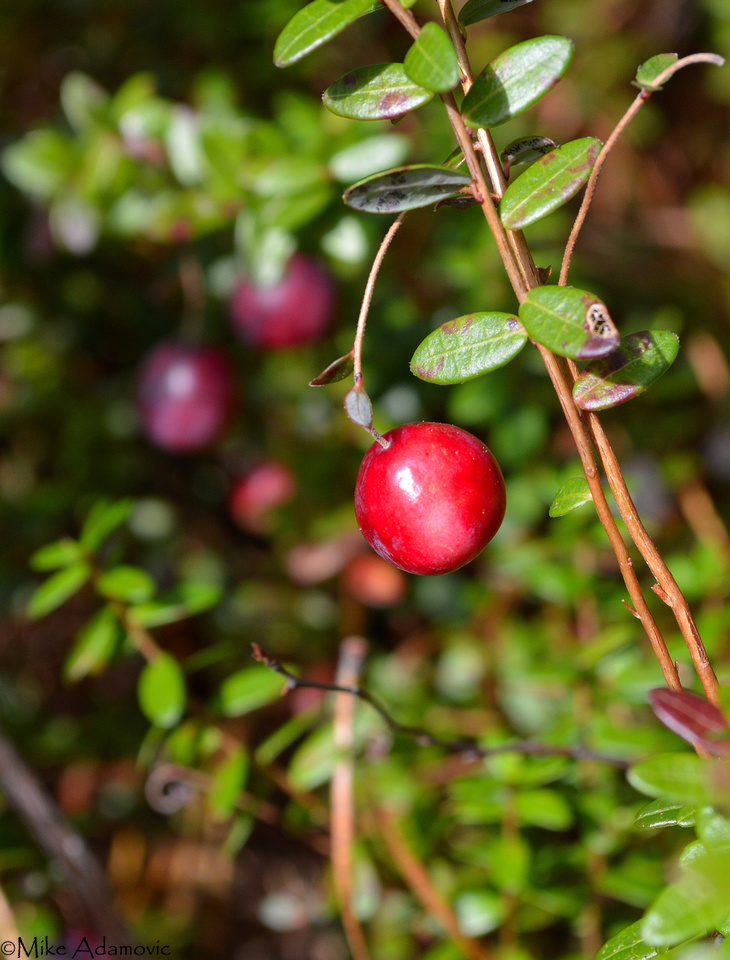

Carnivores
Contrary to what most people believe, there are, in fact, several species of plants which have an insatiable hunger for flesh. Although, their idea of a hearty meal isn’t that of pork chops or a steak, but rather of smaller prey, namely insects. “Carnivorous plants” is an appellation much more terrifying than these organisms actually are (at least for anything other than an insect!). Nevertheless, the plants are impressive to behold. Their ingenious mechanisms for capturing prey demonstrate the remarkable power of evolution to shape life to overcome all impediments. Carnivorous plants have evolved to trap insects to survive in an environment that’s nutrient poor, lacking primarily in nitrogen and phosphorous. The pH in bogs is so low as to inhibit the decomposition of plant and animal matter, thus keeping these important elements locked up. In most other environments they are easily recycled and plants do just fine obtaining their necessary requirements by more mundane means (i.e. absorbing them via the roots from fertile soil). Nitrogen and phosphorous are richly abundant in animals, and these select plants have done well to exploit it from the crawling and flying sources of fertilizer that abound nearby.
In this part of the country, the most common and easily visible plants that capture insects are sundews and pitcher plants. Unfortunately, the well-known and archetypal “venus fly-trap,” is absent from northern bogs, being restricted to a narrow range in the southeast. Sundews and pitcher plants capture prey by very different means.
Sundews snare their prey by use of a sweet smelling attractant with glue-like properties that’s exuded from the tip of thin hairs on tiny round or oval shaped leaves. Any insect that happens to wander across a leaf in search of the tempting treat gets stuck on the gleaming bristles, ultimately perishing mired down in the faux nectar. After a short time the leaves slowly bend and wrap around the insect, digesting it by use of special enzymes whereby it may extract the precious nutrients.
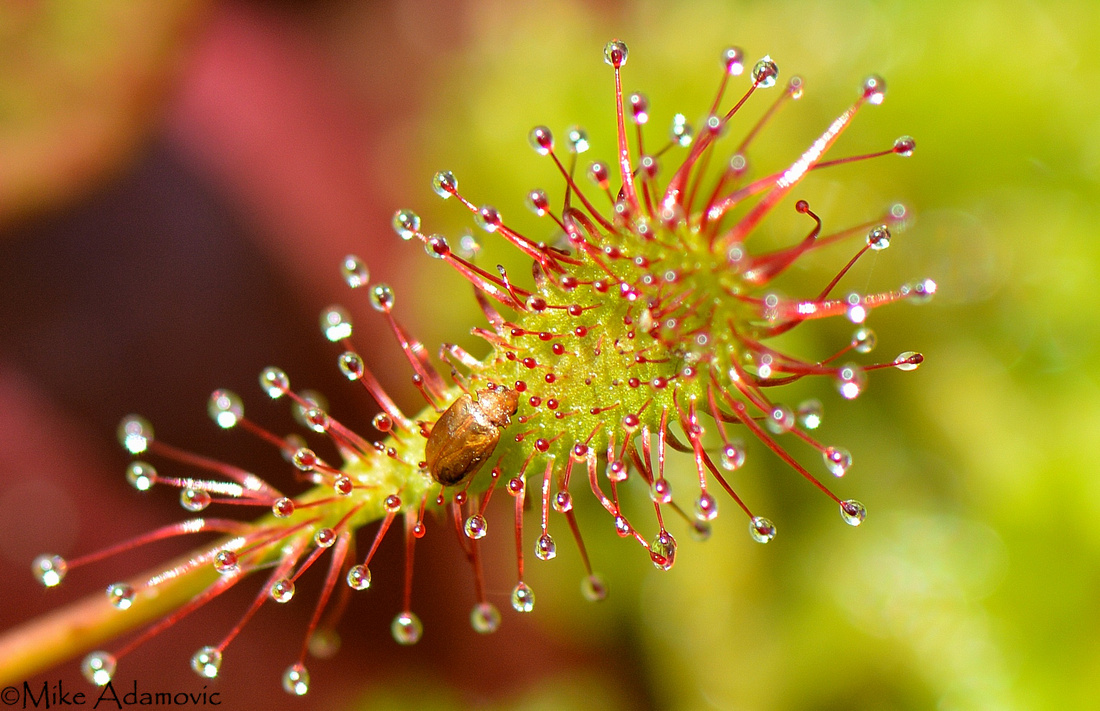



Pitcher plants don’t snare insects, but entrap them in their cavernous “pitchers.” Like the sundews, these plants secrete a sweet nectar that’s present on the lip of the funnel. Insects are drawn by the smell and by the shape and color of the pitchers, which happen to somewhat resemble an opened flower. Pitchers vary considerably in color, some being entirely green or red, others with numerous combinations of mixing. The ruddy hues in particular draw insects; some think it’s a brightly colored flower, while flies, are inclined to believe it to be the exposed flesh of carrion. Once at the lip of the pitcher many insects either fall or purposely dive into the interior. Either way, they are unlikely to make an exit once at the bottom. The upper portions of the pitcher are waxy and slick, while further down towards the base the sides are lined with downward pointing hairs. It’s almost like a lobster pot—creatures have little difficulty in getting in, but are at a loss when it comes to escaping. Enzymes excreted by bacteria coalesce at the base creating a solution sometimes with a pH as low as 2, easily liquefying whatever happens to fall in.


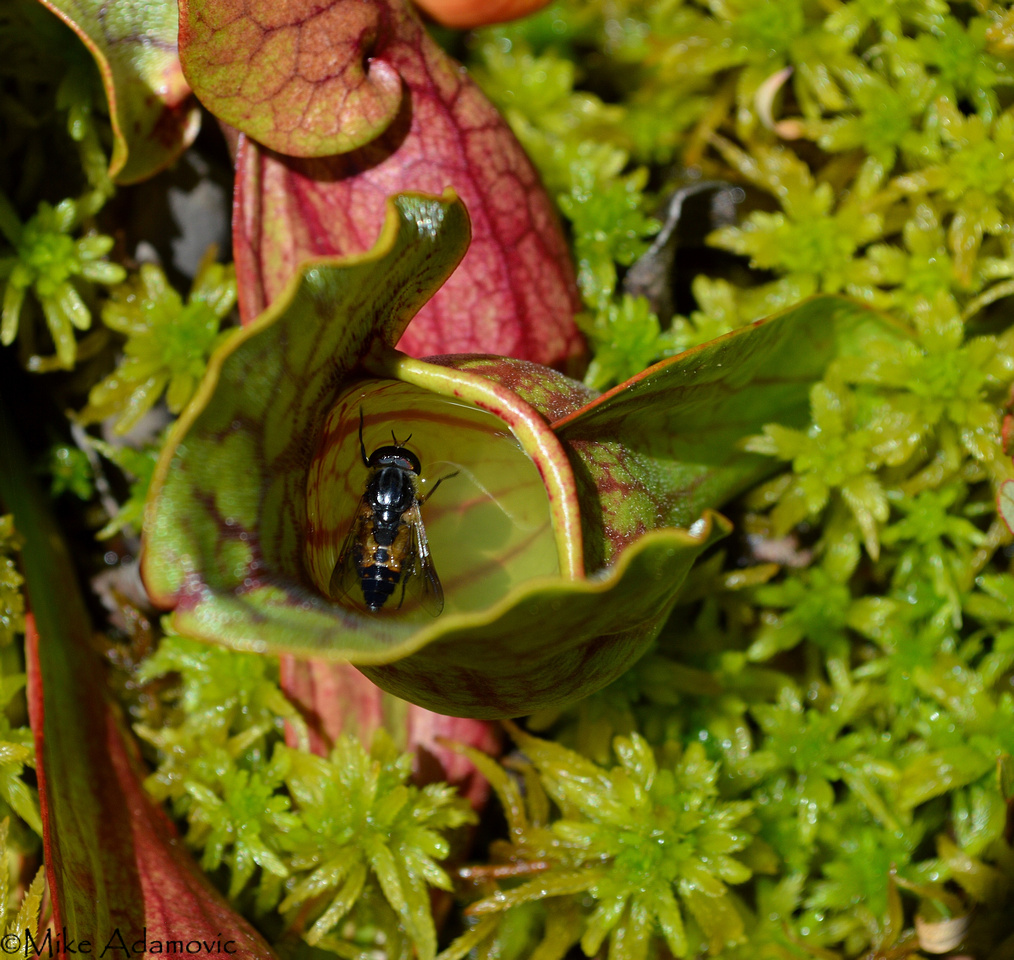

Diversity
Growing alongside these oddities, though almost always at greatly diminished numbers, are the fairer and more refined orchids. Often, they stand out in a swamp like a torch does in the blackness of night. They are quite vibrant with an elegancy that overshadows all surrounding plant life, making even the flowers of the carnivores look vapid and uninspiring. Several different species of orchids that exclusively flourish in boggy habitat are scattered across the Northeast, almost all of them extremely rare. The “Dragon’s Mouth Orchid” is among the finest, living up to its name in appearance and sprucing up the bog with purple-pink flashes of “fire” emanating from its ephemeral blossoms. Other similar looking species include “Grass Pink” and “Rose Pogonia.” Not all bogs contain this class of plants. Countless hours may be devoted to combing through wetlands looking for rarities such as these. Making it even more difficult is the fact that most bog orchids bloom for only a short duration during the early days of summer. Orchids are also among the pickiest plants, growing only where the environmental and biological conditions are absolutely perfect, even the slightest variation resulting in their absence. The main factor responsible for their establishment is the presence of a specific type of fungus that orchids form a mutualistic relationship with.
Now when it comes to animal life, these places are nearly as rich in diversity as the assortment of plants they contain. Innumerable species of dragonflies and damselflies-- the odonates, zig zag back and forth between the open water and quasi-terrestrial environments of the floating mats and dense stands of sedges and reeds, alighting momentarily from time to time on any piece of vegetation that stands alone, or is higher than the rest, seeking out a vantage point similarly to what a hiker does while climbing a scenic mountain. It’s an ever-changing kaleidoscope of color and shape that’s enhanced and magnified by the reflection of the water. From time to time these insects repose on one of the sundews that line the edges of the sphagnum mats, and may succumb to the sticky leaves; most, however, at least the larger dragonflies, have strength enough to overcome the force of the miniscule droplets of glue and take to the air again where they may become prey for avian marsh species.
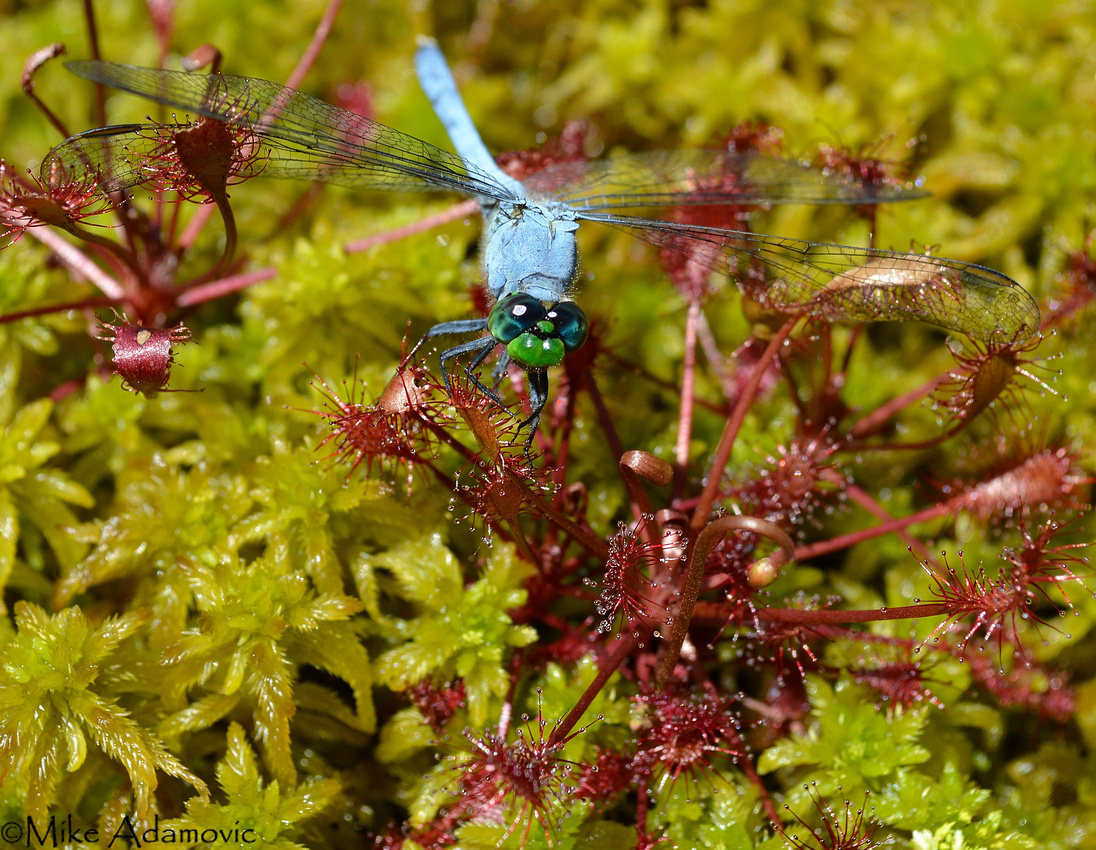

Lining the fallen logs that lie partially submerged throughout the bogs, sometimes for decades before they disappear by decay or sink entirely, are the turtles who bask themselves in the warmth of the sun to thermoregulate and kill parasites and algae. Being cold-blooded, turtles must adjust their own core temperature by spending the appropriate amount of time in sun and shade. Like almost everything else inhabiting these wetlands, uncommon to rare varieties are located here. Bog and wood turtles, two closely related species that are the only members of their genus, are only infrequently found outside this habitat type.
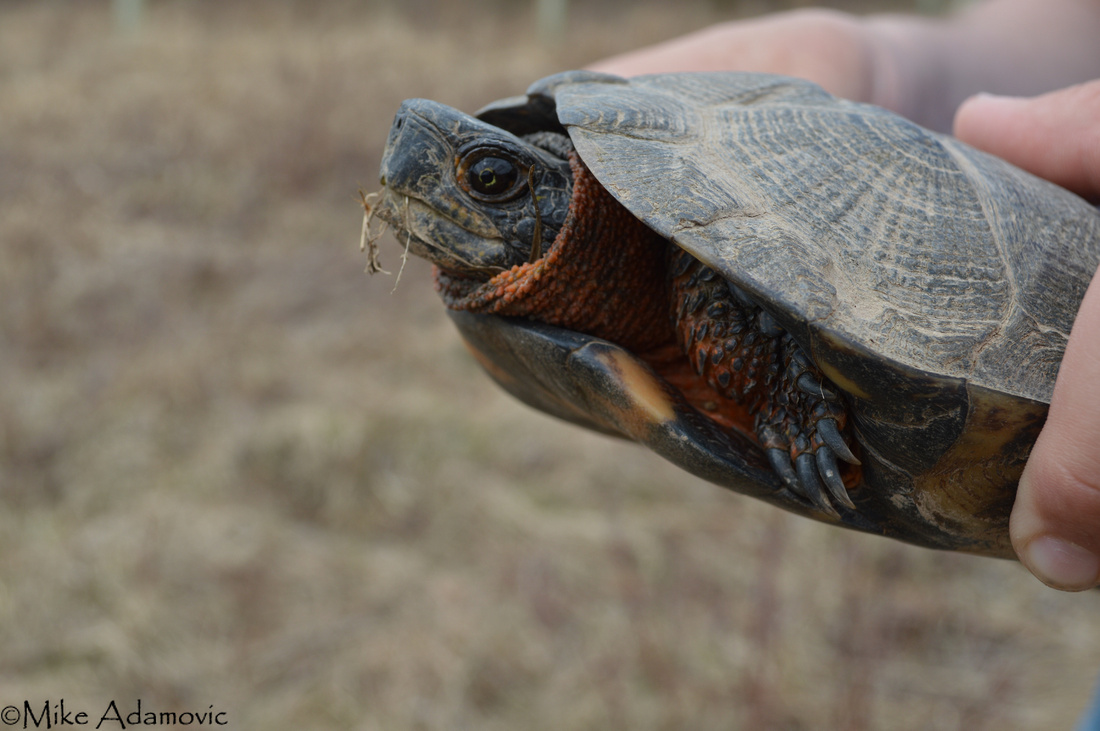

In the ripeness of summer white-tailed deer are apt to venture into the murky water and swim out to the mats to raze the flowers of the pitcher plants from their lengthy stalks, their movements easily being seen where their narrow legs have compressed the moss, sometimes having punched through entirely to the water. Bears, too, also make the occasional foray. With their tremendous weight and not so graceful lumbering, they tend to stick the edges, enjoying huckleberries and highbush blueberries that exist in copious profusion in many areas. The berries having an ample supply of moisture, regularly become twice the size of those found atop dry and rocky mountain summits. Despite bogs being nutrient poor, there’s a cornucopia of biodiversity to be found within them that surpasses typical forest environments.
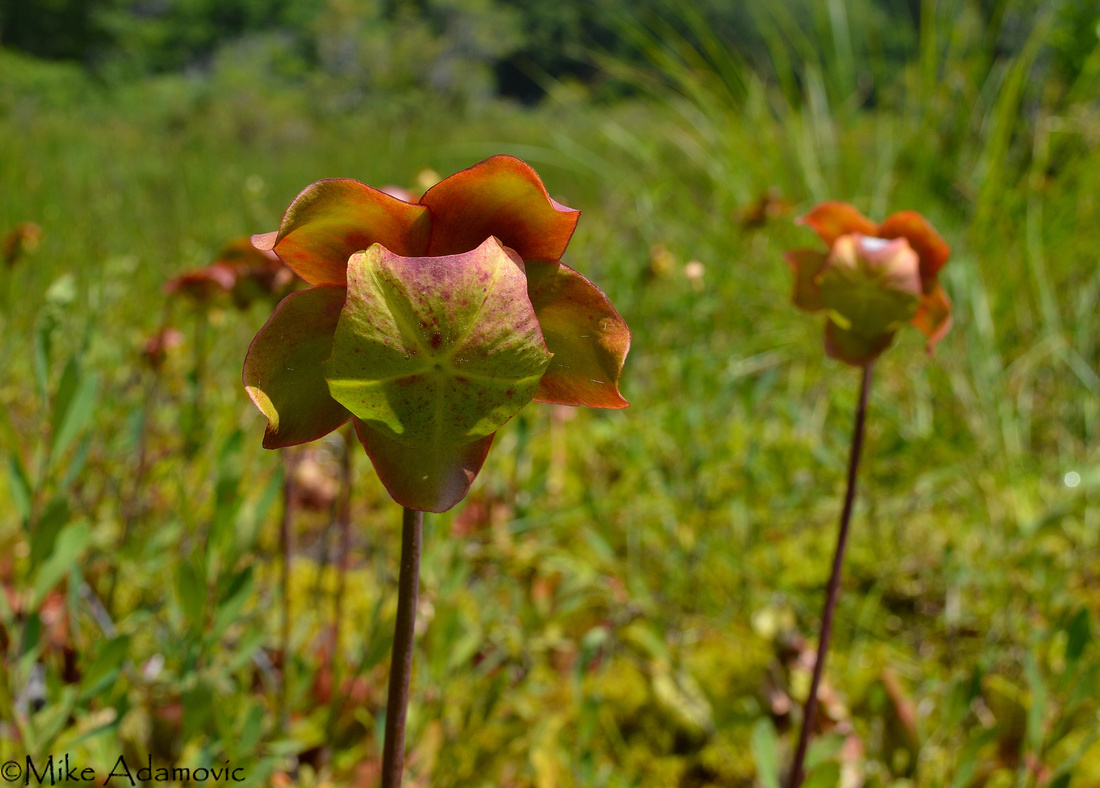

Supernatural Evening
When night creeps in on these places man usually beats a hasty retreat to the safety of more hospitable venues. For millennia, only the bravest of souls tempted fate by lingering in these so-called haunted locales, where countless superstitions told of the restless souls of the departed who roamed the melancholy bogs in penance for their earthly sins. It was also firmly believed that demons and vengeful spirits took abode here, nightly attempting to lure passersby to their doom in the quicksand-like mire by emitting beacons of light that would draw humans to their demise like unwitting moths.
As the sun begins to set and the mists slowly settle heavily over the swampy plains, the last notes of songbirds subside giving way to a silence only periodically interrupted by the rustling of the sedges and creaking of dead branches. Shadows grow and multiply from what little light remains from the nearly extinguished sun. A calming influence overtakes the viewer temporarily. But, anyone who remains for any length of time at this twilight hour peering into the murky abyss will begin to become unsettled upon hearing what sounds like broken strains of human voices carried in on the gusts of wind. The imagination ripe with remembrances of ghostly tales begins to overtake reason. As primal fear and uncertainty multiply and quicken the pulse, a brief but robust flash of light penetrates the darkness from the far side of the bog. Another burst soon goes off. Is this an exceptionally large firefly? Swamp gas? Or is it something more sinister?—Could it be a demonic will-o’-the-wisp looking for some hapless victim to accompany it for eternity on its nightly scourings in the chill and dampness of the acid sphagnum? There’s only one way to know for sure…
Perhaps this is one secret best left alone.
